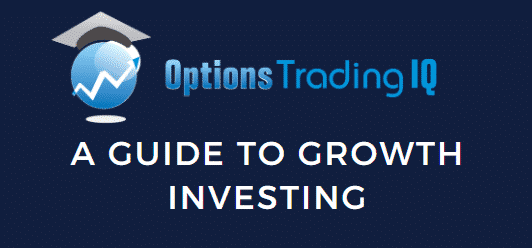

Investors often wrestle with the decision whether to go for growth or value, so in today’s article we’ll take a detailed look at growth investing.
Enjoy!
Contents
- Introduction
- Potential For Future Growth?
- Solid Forward Earnings Growth
- Strong Yield On Equity
- Decent Past Earnings Growth
- High Profit Margins Conclusion
- Consistently Strong Stock Performance
- Thomas Rowe Price, Jr.
Introduction
A growth investors main objective is to increase their investment capital.
An investor who is implementing the growth investing strategy will typically trade stocks of companies in their early stages whose earnings are predicted to increase at an above average rate when compared to their industry and the overall market.
Growth Investing is highly appealing to traders who are looking for a medium to long-term investment that has the potential to accrue huge profits – hinging on the success of the company.
Despite the potential for immense profits, there is a substantial amount of risk that comes along with investing in unproven/untried companies.
Potential For Future Growth?
Evaluating a stocks potential for future growth is crucial to the success of this strategy.
There is no steadfast formula for evaluating the potential of future growth, what is required of investors is a high degree of individual interpretation founded on both subjective and objective factors.
As a general rule, growth investors look at five key displays when choosing stocks that may provide capital appreciation.
Solid Forward Earnings Growth
Growth investors pay a large amount of attention to a company’s earnings announcement, which is a public statement of a company’s profitability for an explicit period.
Equity analysts issue earnings estimates and it is these predictions that a growth investor will closely analyse in the hopes of determining which stock will grow at an above-standard rate when compared to the industry.
Strong Yield On Equity
A company’s return on equity (ROE) is a financial indicator that measures the profitability of the company through the disclosure of the profit that is generated with the money the shareholders have invested.
The output of dividing net income by total shareholder equity is a company’s ROE.
A general piece of advice given to growth investors by professionals is to compare the present ROE of a company with the 5-year average of both the company and the industry.
A consistent or increasing ROE is indicative of the management team completing their roles effectively – generating returns from investors and conducting the business efficiently.
Decent Past Earnings Growth
The track record of a company’s earnings over the previous five to 10 years should show strong earnings growth, as a general rule of thumb.
The minimum earnings per share (EPS) growth depends on the scale of the company.
For example, a growth investor will most likely look for growth of at least 5% for companies valued at over $4 Billion; 7% for companies who fall into the $400 Million to $4 Billion range; And 12% for companies who are valued at less than $400 Million.
The foundational concept of the idea is that a company will continue following similar patterns from their past – If good growth has been illustrated in the past, a company is likely to maintain that level of growth into the future.
High Profit Margins
A company can have outstanding growth but poor profit margins – so as a growth investor it is important to consider a company’s pre-tax profit margin before investing.
It is most often an indicator of poor management when there is strong growth in sales but poor growth in margins, it displays a lack of control concerning the business costs.
An arbitrary but effective mindset to have is that if a company surpasses its previous five-year average of pre-tax profit margins, including those of the industry it operates in, then the company may be a successful growth candidate.
Consistently Strong Stock Performance
If a stock cannot double its value within 5 years, it is most likely not a growth stock.
A per annum growth rate of 15% is extremely reasonable for young and rapidly expanding companies – at this rate, the stock price would double within 5-years.
It is important to note that at a growth rate of 10% a stock would still double in value after 7 years.
Proven growth investors do not recommend investing in companies that have a below 10% growth rate as it goes against the purpose of the strategy.
Thomas Rowe Price, Jr.
Price is a well-known investor amongst the growth investing community and is seen to be the father of the strategy.
He set up the T. Rowe Price Growth Stock Fund in 1950 which was the first mutual fund to be suggested by his advisory firm.
The renowned fund averaged 15% growth per annum for 22 years!
It is an excellent display of the ability of growth investing to provide immense returns over an extended period.
Trade safe!
Disclaimer: The information above is for educational purposes only and should not be treated as investment advice. The strategy presented would not be suitable for investors who are not familiar with exchange traded options. Any readers interested in this strategy should do their own research and seek advice from a licensed financial adviser.










